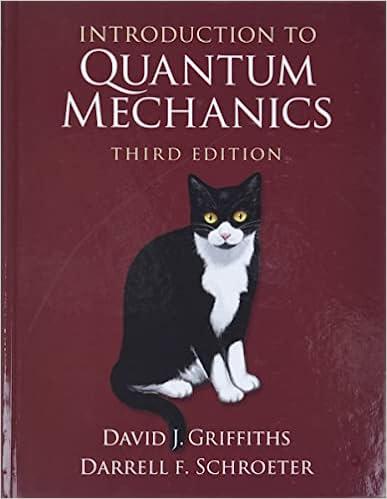The S-matrix (Problem 2.53) tells you the outgoing amplitudes (B and F) and in terms of the
Question:
The S-matrix (Problem 2.53) tells you the outgoing amplitudes (B and F) and in terms of the incoming amplitudes (A and G) —Equation 2.180. For some purposes it is more convenient to work with the transfer matrix, M, which gives you the amplitudes to the right of the potential (F and G) in terms of those to the left (A and B):

(a) Find the four elements of the M-matrix, in terms of the elements of the S-matrix, and vice versa. Express Rl, Tl, Rr, and Tr (Equations 2.181 and 2.182) in terms of elements of the M-matrix.
(b) Suppose you have a potential consisting of two isolated pieces (Figure 2.22). Show that the M-matrix for the combination is the product of the two M-matrices for each section separately:
![]()
(This obviously generalizes to any number of pieces, and accounts for the usefulness of the M-matrix.)
(c) Construct the M-matrix for scattering from a single delta-function potential at point a:
![]()
(d) By the method of part (b), find the M-matrix for scattering from the double delta-function
![]()
What is the transmission coefficient for this potential?

Figure 2.22: A potential consisting of two isolated pieces (Problem 2.54).
Step by Step Answer:

Introduction To Quantum Mechanics
ISBN: 9781107189638
3rd Edition
Authors: David J. Griffiths, Darrell F. Schroeter





